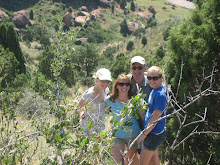Teenager Jason Bock is frustrated with his parents’ pressure to conform to the beliefs of Catholicism, a religion that leaves him dissatisfied. So he creates a new religion that focuses on water as the source of all life and regards the water tower as God, aka the Ten-legged One. Among the converts to the Church of the Ten-Legged God (CTG) are: Shin, the gastropod-loving geek who becomes obsessed with writing the religion’s bible; Dan, the preacher’s son who joins to defy his dad; Henry, the bully who challenges the followers to more dangerous feats in the name of their faith; and Magda, Jason’s crush who seems more interested in Henry than the religion. During their first Tuesday Sabbath mass on the dome of the water tower, Henry challenges the group to enter the “godhead” to become baptized. This ritual puts Henry in the hospital and most of the Chutengodians in jail. Jason soon finds followers breaking away into different sects. Henry and Magda, now Choots, have rewritten the religion’s commandments and Shin, now a religious fanatic, attempts to sacrifice himself to the godhead. In the end, Jason remains committed to Chutengodiaism while he wonders if he will ever have faith.
This book would be a great starting point for a discussion on the qualities of a good leader. Children could prioritize these qualities and then based on these criteria decide first if Jason Bock is a good leader and then use these same qualities to help describe a person who they think is a good leader.
Whether he is a good leader or not, Jason Bock is a well-written character. Jason’s honest doubts about established religion and also his new religion make him relatable to readers who have questioned their own identity and their own beliefs. His relationships with other characters are typical for teenagers. He interacts with his best friend Shin, a love interest Magda, and the hometown bully Henry. Jason’s opposition to his father’s values is also something that many teens have faced at one time. By placing Jason in the small town setting of St. Andrew’s, with its one water tower, Hautman poignantly contrasts the single-mindedness of the minds in a small town with Jason’s divergent thinking and beliefs.
In terms of plot, Hautman eases his readers into a difficult subject through a balance of humorous and serious issues. The initial conversations about gastropods and the Ten-Legged Ones are imaginative and comical. Readers are as intrigued as Jason is to see how Henry makes it to the top of the tower. It is only when the “believers” start to practice their new religion and break the law that the tale takes an somewhat unexpected and serious turn. Some readers undoubtedly expected what follows because Hautman’s successful use of foreshadowing . The policeman’s warning of the danger and illegality of climbing the tower foreshadows the events of the fateful midnight service. Shin’s speech about “channeling the Ten-Legged One” foreshadows his extreme behavior on the night of the storm. Magda’s interest in CTG because of Henry foreshadows her joining him when the CTG splits. Hautman also effectively uses images of water to help the plot along. Water is present in each part of the plot, including the scene in which the followers are baptized by swimming in the tower and the climax in which Shin is on the top of the tower when during the thunderstorm.
There will be readers who interpret this book as a challenge to established religion. However, Hautman does not seem to preach that any one belief system is better than another, but instead he provides a valuable way for readers to contrast their own beliefs and religion with those discussed in the book. Another important theme in Godless is the recognition that with power comes responsibility. This theme is echoed by Jason’s father when he reminds Jason of his power over Shin and Danny and later seen when Henry tires first to take over during the midnight service and then seizes power by creating his own sect. Additionally, the theme of water as the source of life is evident throughout the book in Shin’s writings at the beginning of each chapter and in the water-based rituals of CTG. While the themes of faith, power, and water are all complex ideas, Hautman pulls them all together in an provocative and entertaining manner.
A middle school or high school class could use Godless as the basis of a discussion about teens establishing their own identities and the impact of friendships on those identities. Although schools might find it difficult to discuss religions, an interesting Social Studies project would be to compare different cultures’ religions, including their major beliefs and practices. I believe this would go a long way to promoting tolerance for other peoples’ belief systems. Finally, Jason saw Shin’s drawings of people depicted as water towers . For an Art extension, students could draw themselves as a water tower or other large inanimate object and attempt to include elements of their own personality in the object.



